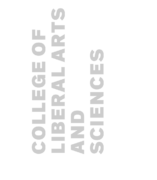
Liang Hong
Graduate Student
Physics Department
Contact
Building & Room:
SES 2370
Office Phone:
Email:
About
Ph.D. student working on experimental and theoretical characterization of functional oxide materials.
Selected Publications
- Hong, K. Bhatnagar, R. Droopad, S. Ogut, R. Klie, “Atomic-scale structural and electronic properties of SrTiO3/GaAs interfaces: A combined STEM-EELS and first-principles study”, Physical Review B, v.96, p.035311 (2017).
- Hong, D. Huber, R. Contreras-Guerrero, R. Droopad, R. Klie, “In-situ STEM-EELS observation of ferroelectric switching of BaTiO3 film on GaAs”, Microscopy and Microanalysis, v.23(S1), p.1628 (2017).
- Ghose, M. Rahman, L. Hong, J. Rojas-Ramirez, H. Jin, K. Park, R. Klie, R. Droopad, “Growth and characterization of β-Ga2O3 thin films by molecular beam epitaxy for deep-ultraviolet photodetector”, Journal of Applied Physics, v.122, p.095302 (2017).
- Hong, R. Droopad, S. Ogut, R. Klie, “Structural properties of SrTiO3/GaAs hetero-interfaces”, Microscopy and Microanalysis, v.22(S3), p.1454 (2016).
- Rahman, S. Ghose, L. Hong, R. Klie, R. Droopad et al., “Integration of BiFeO3/La0.7Sr0.3MnO3 heterostructures with III-V semiconductors for low-power non-volatile memory and multiferroic field effect device”, Journal of Materials Chemistry C, v.4, p.10386 (2016).
- Hong, R.Klie, S.Ogut,“First-principles study of size- and edge-dependent properties of MXene nanoribbons”, Physical Review B, v.93, p.115412 (2016).
- Hong, S. Ogut, R. Klie, “Transmission electron microscopic and first-principles study of SrTiO3/GaAs hetero-interfaces”, Microscopy and Microanalysis, v.21(S3), p.1647 (2015).
Research Currently in Progress
My Ph.D. project focuses on atomic-scale characterization and analysis of heterostructures of oxide thin films and semiconductors using aberration-corrected scanning transmission electron microscopy (STEM) techniques and first-principles modeling. The electronic properties of epitaxial oxide thin films grown on compound semiconductors are largely determined by the interfacial atomic structure, as well as the thermodynamic conditions during synthesis. Ferroelectric polarization and Fermi-level pinning in SrTiO3 films have been attributed to the presence of oxygen vacancies at the oxide/semiconductor interface. In this work, we perform STEM and EELS analyses of GaAs films grown on SrTiO3 combined with first-principles calculations to determine the atomic and electronic structures of the SrTiO3/GaAs interfaces. An atomically abrupt SrO/As interface is observed and the interfacial SrO layer is found to be O-deficient. First-principles density functional theory (DFT) calculations show SrO/Ga and Sr/As interfaces are favorable under O-rich and O-poor conditions, respectively. The SrO/Ga interface is reconstructed via the formation of Ga-Ga dimers while the Sr/As interface is abrupt and consistent with the experiment. DFT calculations further reveal that intrinsic two-dimensional electron gas (2DEG) forms in both SrO/Ga and Sr/As interfaces, and the Fermi level is pinned to the localized 2DEG states. Interfacial O vacancies can enhance the 2DEG density while it is possible for Ga/As vacancies to unpin the Fermi level from the 2DEG states. These results provide useful insights for designing and developing semiconductor devices with smaller scales.